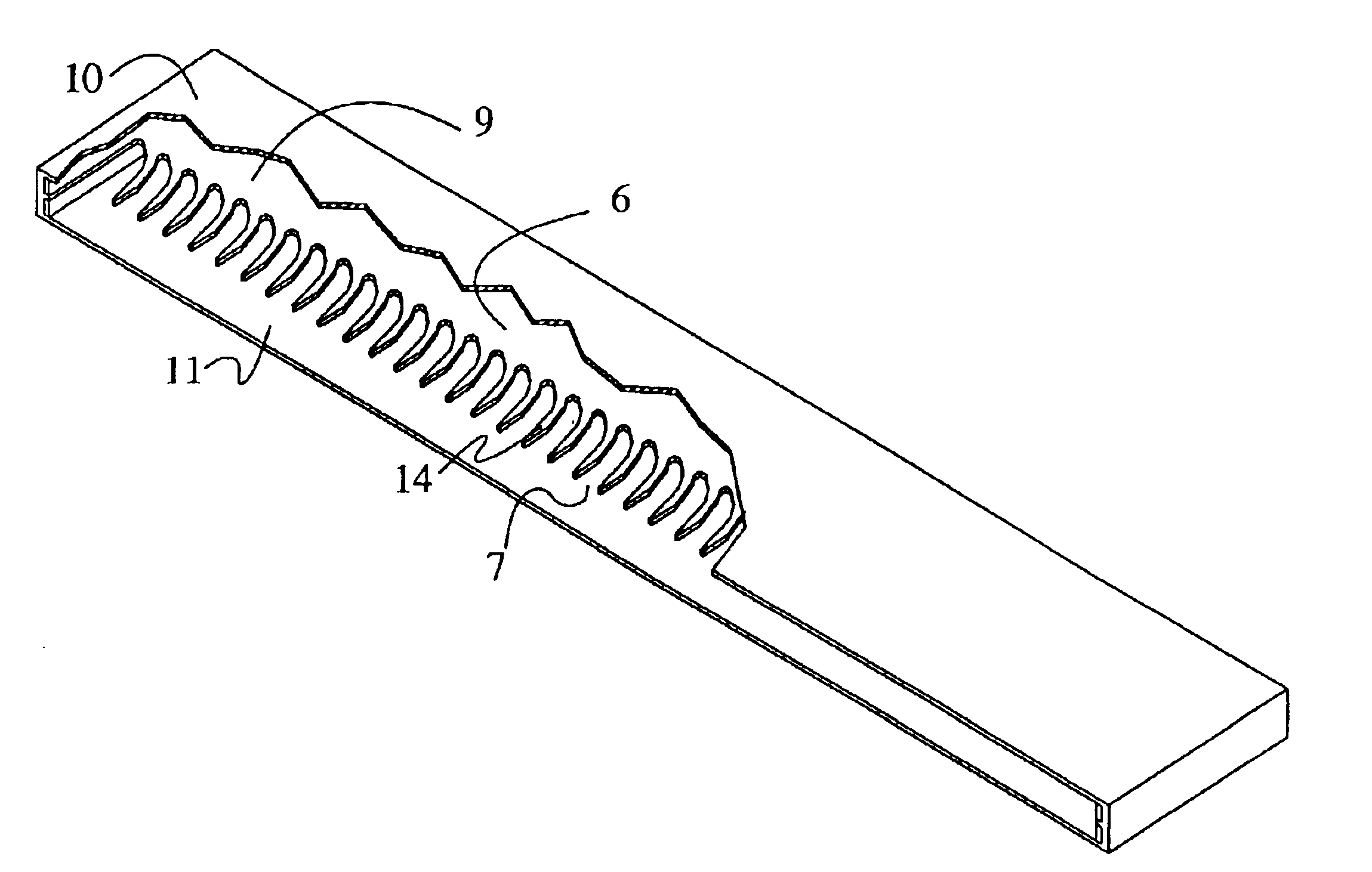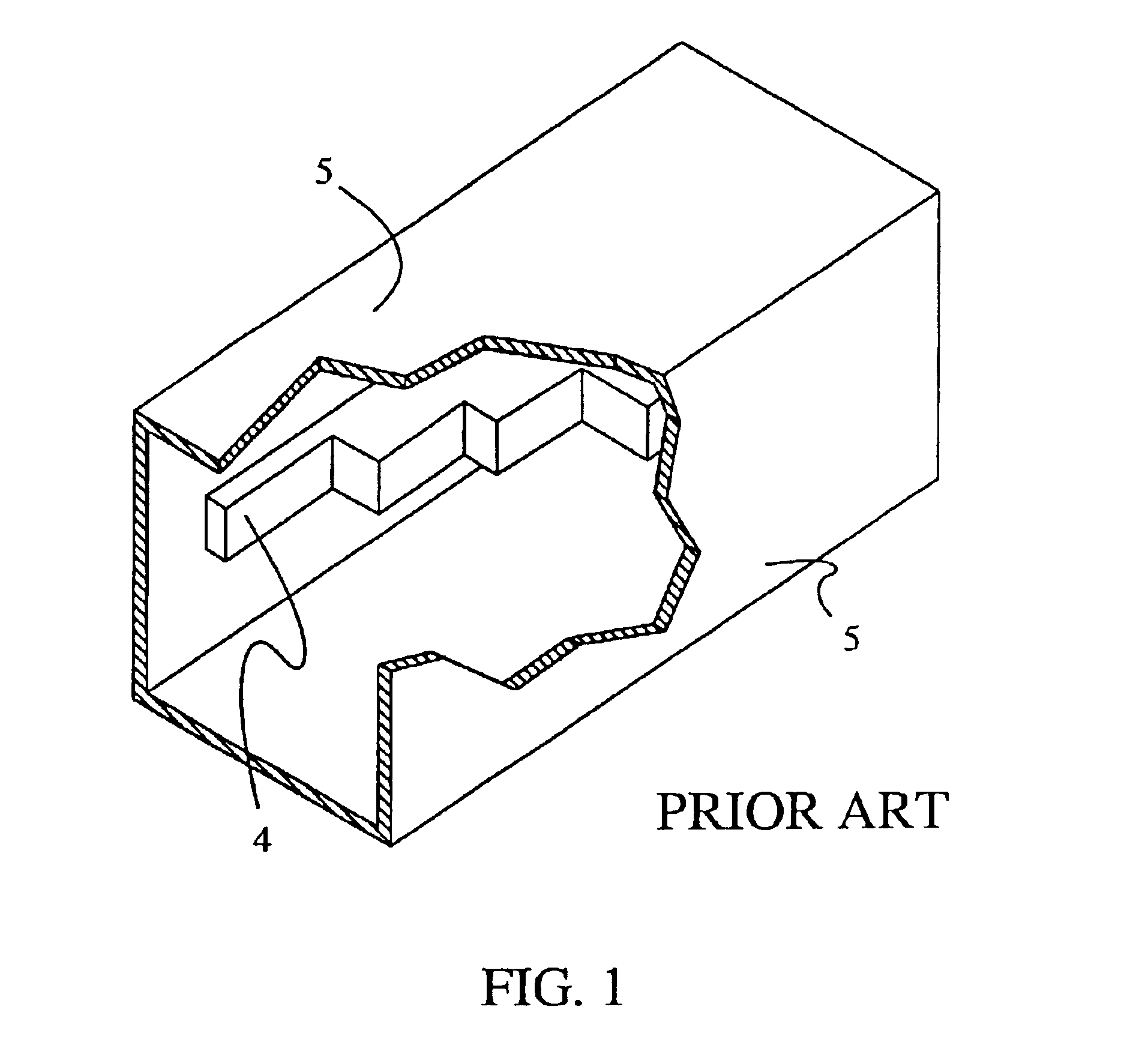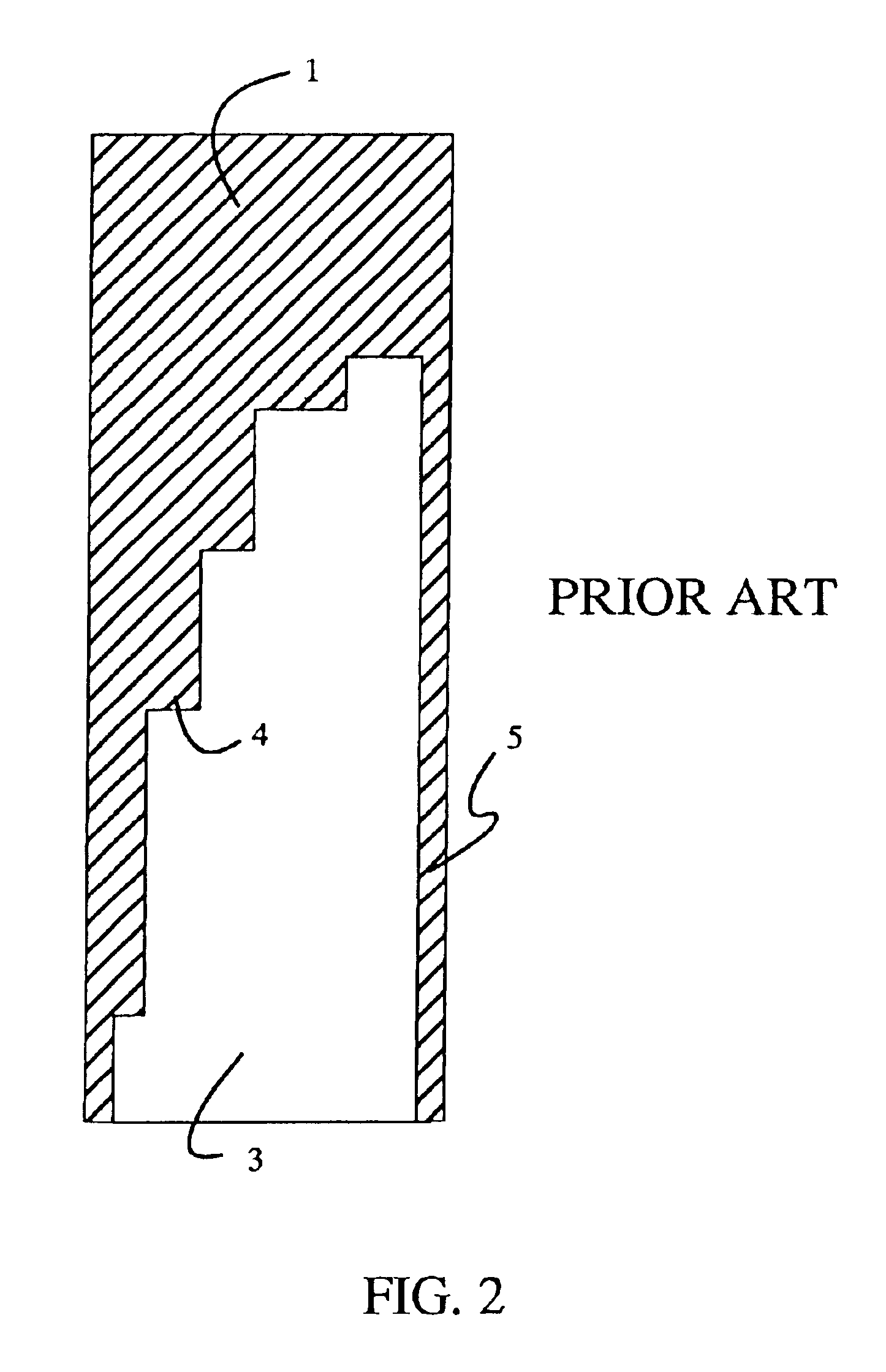Parallel plate septum polarizer for low profile antenna applications
a technology of parallel plate and antenna, applied in the field of parallel plate septum polarizer for low-profile antenna applications, can solve the problems of not producing undesired mode, feeding network that would work, and using parallel plate waveguide in a dual-polarized manner
- Summary
- Abstract
- Description
- Claims
- Application Information
AI Technical Summary
Benefits of technology
Problems solved by technology
Method used
Image
Examples
Embodiment Construction
A prior art, rectangular waveguide, septum polarizer is illustrated in FIGS. 1 to 3. The upper and lower rectangular waveguide regions are labeled 1 and 2 respectively. The square waveguide region is labeled 3. The central common wall is labeled 4. The other walls of the waveguides are labeled 5. These diagrams show a stepped septum, 4, version of the polarizer.
The cross-section dimensions of the upper and lower waveguides are identical. Let a be the broad dimension and b the narrow dimension. Let the common wall have a thickness of w. b is normally chosen so that the guide 3 is square, i.e. a=b+b+w. a is chosen so that only the TE10 mode propagates in the upper and lower waveguides and only the TE10 and TE01 modes propagate in guide 3. This requires that λmax2<a<λmin2(1)
where λmin and λmax are, respectively, the minimum and maximum wavelengths in the operating frequency band for the material filling the waveguides. An explanation of the modes and their nomenclature is given i...
PUM
 Login to View More
Login to View More Abstract
Description
Claims
Application Information
 Login to View More
Login to View More - R&D
- Intellectual Property
- Life Sciences
- Materials
- Tech Scout
- Unparalleled Data Quality
- Higher Quality Content
- 60% Fewer Hallucinations
Browse by: Latest US Patents, China's latest patents, Technical Efficacy Thesaurus, Application Domain, Technology Topic, Popular Technical Reports.
© 2025 PatSnap. All rights reserved.Legal|Privacy policy|Modern Slavery Act Transparency Statement|Sitemap|About US| Contact US: help@patsnap.com



